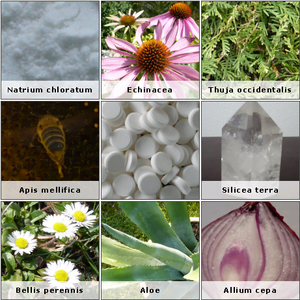Problem and Justification
The State of Nevada is allocated 300,000 acre-feet of Colorado River water annually as was outlined in the Colorado River Compact of 1922. Lake Mead has a storage capacity of 24 million-acre-feet (MAF). The current volume of Lake Mead is 12.361 MAF, which is 56.75 % of full-pool capacity. Nevada’s economy is primarily driven by the development that accompanies population growth, increasing the needs for drinking water, recreation and hydroelectric power. At current growth rates it is estimated that there is a 10 percent chance that Lake Mead will dry up by 2021 and a 50 percent chance it will be dry by 2050 (NCLS 2008). Indeed, the city’s use of Colorado River water since the 1970s has increased substantially as the city has grown(fig. 1).
This Cost-Benefit-Analysis (CBA) considers the hypothetical situation in which Las Vegas’s share of Colorado River is removed. Given that Vegas uses from the river an amount of water that exceeds the entire state’s allotment, this CBA is subsequently considering the removal of Nevada from the Colorado River Compact.
Removing the State of Nevada from the Colorado River Compact and re-establishing flow in the Colorado River will bring all Lakes in the Lower Colorado River Basin (Mead, Mohave, Havasu) to full pool in approximately 36 years but would also force Nevada to seek its 300,000 ac-ft elsewhere.
At the time of the signing of the Colorado River Compact, Las Vegas had a population of 5000. Now, however, the city of Las Vegas is one of the fastest growing cities In the United States. It currently boasts a population of approximately 2 million people with 36 million annual visitors (Fishman 2011) and grew at a rate of 41.8% between 2000-2010 (U.S. Census Bureau 2010). Using the exponential growth equation, a 2020 population of 2.8 million can be calculated. However, the state plans for an additional 1.2 million people by 2020 (fig. 2). This figure assumes a growth rate of 59% from 2012-2020.
Demand for water in the area outstripped supply for the first time in 2005 (Zetland 2011). As the city population continues to grow this problem will only continue to get worse. In comparison to other cities, Las Vegas uses between 2 and 3 times the amount of water per person per day (Littlejohn 1999). Municipal water rates are among the lowest in the country at $0.02/10 gallon (Gelt 1997). This hardly encourages conservation.
Lake Mead
Lake Mead is the major source of Las Vegas’s water. The city uses over 500,000 acre-feet of water annually, 90% of that water comes from Lake Mead and two-thirds of this consumed municipally. Contrary to popular belief, the seemingly wasteful casinos only contribute to 3% of this use (Waterman 2010). Thus, it can be assumed that all of Nevada’s Colorado River allotment is consumed municipally by Las Vegas. Approximately 10 million visitors come to Lake Mead annually (Smith 1998). Lake Mead exists due to the impoundment of the Colorado River behind Hoover dam. Not only does Lake Mead provide the city’s water supply and a hearty flow of tourism dollars, it generates the power that runs the city of Las Vegas at Hoover dam.
As Las Vegas consumes its share of Lake Mead, the Lake’s water level is continually dropping.This problem is exacerbated by the long-term drought in the southwestern United States. A loophole in the Colorado River compact allows Las Vegas to draw more than its share from Lake Mead by allowing the City to exchange wastewater discharge into the Lake at a 1 to 1 ratio for freshwater (Zetland 2011). This allows the lake to drop at a slower rate than it would if it weren’t for the discharge despite the environmental consequences of putting hundreds of thousands of acre-feet of wastewater into the Colorado River.
Still, Lake Mead dropped 125 feet between 2000-2010 (Fishman 2011). The National Park Service (NPS) estimates a loss of $6 million per 20-foot drop in lake elevation (NLCS 2008). Given that, a 125-foot drop in water level equates to a loss in revenue for the NPS of $37.5 million dollars. Hydropower generation at Hoover dam also takes a major hit as lake elevation decreases because hydropower production is a function of water height. Currently the dam has revenue of $152 million. Congress sells power from Hoover dam at 1.8¢/kilowatt-hr (Zetland 2011). At full capacity the dam produces 2,074,000 kW/hr (U.S. Bureau of Reclamation)Multiplying by hours per day then days per year it is calculated that if Hoover dam at Lake Mead were producing power at full-pool capacity the revenue would increase to $327 million annually.
Analysis
The project’s evaluation criteria will be maximization of Net Present Value (NPV) in the case of removing Nevada’s Colorado River allotment from the years 2012-2020.
This report uses a basic cost benefit analysis with the generally accepted federal discount rate of 7%. Due to the vast range and complexity of available data that has been found regarding this problem, this CBA will only consider costs and benefits surrounding municipal water usage, recreation value on Lake Mead and power production at Hoover dam. The CBA is in the perspective of the city of Las Vegas as those are the most readily available figures.The alternatives to this project will be to do nothing, and allow the State of Nevada to retain their annual allotment of Colorado River water. An alternate CBA is done for this scenario and comparisons made between the two options.
The inputsare water inputs to Lake Mead that will be used by Las Vegas. Because of the Colorado River Compact and current use,this is 300,000 acre-feet, no more, no less. The outputs are what are being done with the water. For the purpose of this analysis the outputs are municipal water use, hydroelectric power generation and recreation.Because of Nevada’s 1:1 wastewater discharge to freshwater exchange deal the municipal water output is equal to the input for municipal water. Hydroelectric power is considered in kilowatt-hours currently and again at full-pool. Recreation outputs are quantified in terms of annual visitors. Municipal water is monetized by figuring what each person in Las Vegas receives from the allotment (fig. 3) in gallons per year and multiplying that by the water rate of $0.02/10 gal (fig. 4). Future water value is based on the assumption that the city, starved of its allotment, will treat and sell its wastewater municipally. Water costs in this analysis are only considered to be infrastructure costs. Future infrastructure costs are figured by considering current project costs and extrapolating from that data what the cost is to secure an extra 300,000 acre-feet. Hydropower revenue is initially $152 million annually (Zetland 2011). At full pool the dam can produce 2,074,000 kW-hours of power (Dwyer 2011) equating to $327 million annual revenues. Costs figured for hydroelectric power are calculated by finding the difference between full-pool production and actual (current) production. Recreation values are taken from the National Park Service and losses are monetized using the cost for a 20 foot drop in lake level.
In evaluating the maximization of NPV we looked at the costs associated with removing the 300,000 acre-feet of water supply from the Colorado River to Nevada against the costs associated with maintaining the allotment agreed upon in 1922. We have determined that the costs associated with supplying Nevada water are $87.5 million for extra intake, plus $175 million in lost revenue due to decreased water level, plus $37.5 million in additional Lake revenue, for a total cost annually of $300,028,320; with benefits of water sales revenue at nearly $2 million, plus $152 million in power revenue, and $3.3 million in revenue from Lake Mead recreation, for a total benefits annually of $157,256,000. By conducting an NPV evaluation from 2012 to 2020 at a federally accepted discount rate of 7% we find that by 2020 we have a total cost of $-995,308,461.
Whereas if the Colorado River were to retain the 300,000 acre-feet instead of giving it to Nevada there would be huge infrastructure costs for attaining additional sources for water supply; these costs are $125 million for the Virgin Pipeline, plus $473.5 million for the Snake River Valley Pipeline, plus $33 million for Arizona Water Banking, and $24.6 million for the Imperial Valley Dam, for a total cost annually of $620,071,429; and benefits from Water revenue at $2 million, plus the increased revenue from power generation at $327 million, and increased revenue from recreation at Lake Mead of $50.5 million for a total benefits annually of $379,465,668. By conducting an NPV evaluation from 2012 to 2020 at a federally accepted discount rate of 7% we find that by 2020 we have a total cost of $-2,945,869,687.
The data used in this study is very basic and therefore very sensitive to change, especially to environmental and population changes. Variations to this analysis exist because many things exist that may change within the near future. Currently there is a severe drought that is also affecting the water level of Lake Mead attributing to an additional 1.5 million acre-feet per year being lost to evaporation, so if the drought were to end and evaporation levels were negligible the supply of water would increase quickly increasing the costs associated with increased intake while also increasing the revenue from the increased capacity for power generation. Other changes would occur if the drought gets worse and the water level in the Colorado River is unable to supply any water to Nevada or receive any revenue from power generation. Other variations include changes in population growth and how that would affect the price charged for water increasing revenue in that area, or the necessity of including the Virgin and Snake River Valley pipelines and the Imperial Valley Dam into the already existing supply coming from the Colorado River and having to include those costs into the project anyway. Variations can also be found if we assume that population in other areas increases and that the water supplied from Lake Mead to Nevada does not actually get retained by the Colorado River and instead is distributed among other cities in the Southwest nullifying the costs of increased water intake, and the benefits of increasing the water level in Lake Mead.
By performing this analysis we are able to see that over the next 8 years it will cost nearly $2 billion dollars more to stop supplying Nevada with water from the Colorado River at Lake Mead than it would for Nevada to continue drawing the allotted 300,000 acre-feet of water from the Colorado River. Though it may prove to be a better policy to continue supplying water to Nevada than discontinuing the supply, neither condition is optimal because under both circumstances there is a net loss, and the costs outweigh the benefits.
Analysis and Conclusion
The results of this analysis show, using only the basic input/output data this report included, an initial NPV in 2012 of -$142,772,320 if the allotment is kept. If Nevada is removed from the Colorado River Compact, the in initial 2012 NPV is -$-240,605,761. Carrying the equations out eight years to 2020 returns a 2020 NPV for Vegas with an allotment and without the allotment of -$83,094,790 and -$429,974,236. The IRR for the river in 2012 is -$142,772,320 for Vegas with its allotment and -$169,270,110. Projecting these values to 2020, the IRR for Vegas with an allotment and without its allotment is -$83,094,790 and -$98,516,745, respectively. Furthermore, the Benefit-cost ratio of Las Vegas keeping it’s allotment is 0.5241 while the benefit-cost ratio of removing Nevada’s allotment is 0.6915. Considering these numbers alone, this analysis can conclude that the costs far outweigh the benefits in both cases. However, the fact that the NPV becomes less negative over time if the allotment is left as is leads this report to conclude that keeping Nevada in the compact would be the preferable option.
Many assumptions had to made in order to run this CBA. First, it was assumed that all data collected was real and continuous. Also, this analysis assumes that 100 % of Las Vegas’s use of the Colorado River is municipal for reasons stated previously. Assumptions concerning wastewater is that Las Vegas will treat and sell the water municipally in order to into Lake Mead as there is current policy that caps wastewater recharge at 21,800 ac-ft per year (Venkatessan 2011). It is also assumed that excess wastewater will still discharge into Lake Mead. This plus increased inflow of 300,000 ac-ft per year could possibly put Lake Mead at full pool by 2020. It is further hypothesized that non-municipal uses have a direct positive correlation with the tourism portion of the Las Vegas economy. Tourist water use on the strip need not be calculated as that water falls under the excess use over 300,000 ac-ft and consequently is ‘free’ under the 1:1 wastewater credit. The same can be said for power production. Though this revenue does not directly benefit the city, the increased production likely fuels the power hungry Vegas strip economy. While the economic benefits of increased power production were not analyzed, this paper makes an assumption of positive correlation.
The authors reiterate that this situation is purely hypothetical, thus the reasoning for so many assumptions. The authors found no data that was comparable to a situation where an entire state’s river allotment is removed. Las Vegas, Nevada will continue to draw it’s allotment of water from the Colorado River, and it is most unlikely that Lake Mead will ever return to full-pool.
References
Coache, Robert. Las Vegas Valley Water Usage Report. Division of Water Resources, State of Nevada, Clark County, Nevada, 2006.
Dwyer, Colleen. The Colorado River and Hoover Dam Facts and Figures. Washington, D.C.: U.S. Bureau of Reclamation. 2005. http://www.usbr.gov/lc/region/pao/brochures/faq.html.accessed 8 Nov. 2011.
Fishman, Charles. The Big Thirst: The Secret Life and Turbulent Future of Water. New York, NY: Simon and Schuster, 2011.
Gelt, Joe. Sharing Colorado River Water: History, Public Policy and the Colorado River Compact.” Arroyo (Water Resources Research Center) 10, no. 1 (1997).
Glennon, Robert. Unquenchable: Americas Water Crisis and What To Do About It. Washington, D.C.: Island Press, 2009.
Littlejohn, David. The Real Las Vegas: Life Beyond the Strip. New York, NY: Oxfortd University Press, 1999.
National Conference of State Legislatures.Climate Change and the Economy: Nevada, Assessing the Costs of Climate Change. Washington, D.C.: NCLS, 2008.
National Park Service.Lake Mead Fees to Increase Jan 15, Buy 2011 Annual Passes at 2010 Rates Through Jan. 14.http://www.nps.gov/lake/parknews/2010-56.htm. 10 Dec. 2010.accessed 7 Nov. 2011
Powell, James Lawrence. Dead Pool: Lake Powell, Global Warming, and the Future of Water in the West. Berkeley, CA: University of California Press, 2008.
Quinlan, Paul. Lake Mead’s Water Level Plunges as 11 Year Drought Lingers. New York, NY. New York Times. 13 Aug. 2010.
Schoenmann, Joe. To Pay for Lake Intakes, Water Bills Going Up Again. Las Vegas, NV: Las Vegas Sun. 6 Dec. 2011.
Smith, Christopher. Deaths Drive Change at Lake Mead. Paonia, CO. High Country News, 9 Nov. 1998
U.S. Census Bureau. http://quickfacts.census.gov/qfd/states/32/32003.html. 2010. accessed 10 Nov. 2011.
U.S. Environmental Protection Agency. Indoor Water Use in the United States. Washington, D.C.:Watersense. http://www.epa.gov/watersense/pubs/indoor.html. 2011. accessed 8 Nov. 2011.
Venkatesan, Arjun. “Systems dynamic model to forecast salinity load to the Colorado River due to urbanization within the Las Vegas Valley”.Science of the Total Environment vol 409 no 13. 2011
Water Resources Research Center. Water Management Issues Surface as Virgin River winds its way to the Colorado. Tucson, AZ: Water Resources Research Center. http://cals.arizona.edu/azwater/awr/marapr04/feature2a.html 2004. accessed 17 Nov, 2011.
Waterman, Jon. Running Dry: A Journey from Source to Sea Down the Colorado River. Washington, D.C.: National Geographic Society Press, 2010.
Zetland, David. The End of Abundance: Economic Solutions to Water Scarcity. Amsterdam: Aquanomics Press, 2011.





